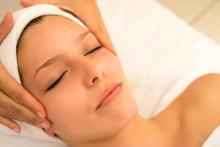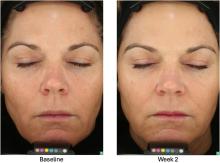Blog
Do Fungi Play a Role in Rosacea?
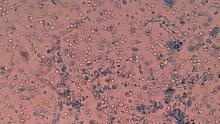
It is well established that differences in the microbiome — the ecological community of microorganisms that live within and on the human body — plays a role in the development of rosacea and affect the severity of signs and symptoms.
Read More
Crescel Skin Renewal Cream: Answering Rosacea’s Treatment Challenges
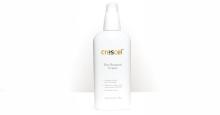
Sponsored post The following announcement is sponsored by Crescel, LLC. Rosacea is a highly inflammatory skin condition driven by a complex interplay of vascular, neural, and immune mechanisms. And it is chronic, recurrent, painful, and progressively disfiguring.
Read More
Feel and Effect Work Together in Skin Care for Rosacea

When it comes to skin care for rosacea, patient preferences are nearly as important as whether it works, according to Dr.
Read More
COVID-19 Infection or Vaccination May Trigger Rosacea in Some Cases

A recently published study found that some people with rosacea may be at risk of a flare-up or worsened signs and symptoms as a result of being infected by COVID-19 — and to a lesser degree from the protective vaccine as well.
Read More
Fending Off Fall Flare-Ups

Autumn brings plenty of pleasantness, like cool breezes, brightly colored leaves, and fun outdoor events and activities. But no season is risk-free for rosacea patients.
Read More
From Flare to Flow: Stress Relief for Rosacea Relief

This week’s guest blogger is Dr. Keira Barr. As a dual board-certified dermatologist and somatic trauma practitioner, Dr. Barr created the Center for Mind Skin Medicine to help rosacea patients calm the storm beneath the surface by addressing the stress, frustration, and invisible weight rosacea can carry.
Read More
New Survey Reveals the Physical Discomforts of Rosacea
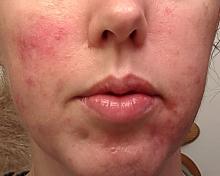
While rosacea is known primarily for its visible signs, such as persistent redness, the overwhelming majority of sufferers also experience unseen effects of the disease.
Read More
Rosacea in Older People: Less Common or Underdiagnosed?

Does rosacea become less of an issue as we age? Or is it just less commonly diagnosed? Two recent studies aim to shed light on this puzzling phenomenon.
Read More
Beyond Sunscreen: Sun Protection Besides Lotions

Summer is here! While most welcome the sun’s warmth and brightness, many rosacea patients have to think twice about going outside for fear of a flare-up.
Read More
Be Cautious with Skin Care Trends and Rosacea

Social media helps new trends spread like wildfire. All of a sudden, everyone seems to be doing some new dance or using a word you’ve never heard before!
Read More
New Study Finds Differences in the Skin Microbiome Between Rosacea and Similar Conditions

Rosacea, steroid-induced rosacea and perioral dermatitis look very similar: all three conditions cause redness and bumps and pimples on the face.
Read More
“Dr. Pimple Popper” Discusses Rhinophyma Treatment at AAD Annual Meeting

Dr. Sandra Lee, host of the popular reality TV series “Dr. Pimple Popper,” discussed her approach and experiences treating rhinophyma — a form of rosacea that results in thickened skin and enlargement of the nose from excess tissue — at the 2025 American Academy of Dermatology annual meeting in Orlando in March. One of the misconceptions she addressed is that this disfiguring form of rosacea only occurs in white men.
Read More
Stress Management is Rosacea Management

Surveys have shown that emotional stress is one of the leading triggers for many rosacea patients. Daily life can be filled with tension and urgent pressures, and it’s important to find time to relax and recover.
Read More
Rosacea Awareness Month Calls for Holistic Approach
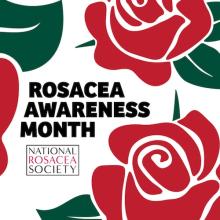
The key to better controlling rosacea is an integrated holistic approach that addresses all aspects of skin health, including everyday skin care, as well as medical therapy and lifestyle changes, according to leading dermatologists.
Read More
Rosacea Awareness Month to Spotlight Holistic Approach to Rosacea Treatment
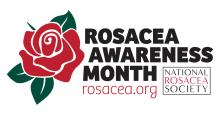
The key to controlling rosacea is a holistic approach that addresses not only the signs and symptoms of the disease but also the personal and environmental factors that can exacerbate the condition, according to leading dermatologists.
Read More
National Rosacea Society Celebrates 25 Years of Awarding Research Grants

The National Rosacea Society (NRS) today announced that it is accepting applications for funding from its research grants program, which is celebrating its 25th anniversary in 2025.
Read More
Topical Ivermectin May Improve Rosacea Indirectly
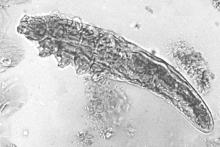
In addition to improving the clinical signs of rosacea, topical ivermectin, an FDA-approved antiparasitic agent for papulopustular rosacea, also may be effective because it alters the bacterial composition of the skin, according to a recent National Rosacea Society-funded study in the Journal of In
Read More
Hormonal IUDs May Increase Risk of Rosacea
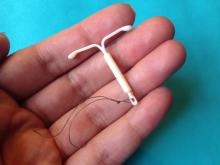
Editor’s note: It’s important to note that these findings only suggest a potential association. To determine any cause and effect relationship, further study is required.
Read More
Rosacea Changes How and When Sufferers Exercise, Survey Finds
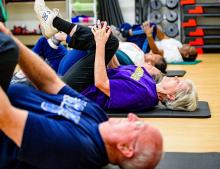
A diagnosis of rosacea doesn’t stop most people from staying active, even though exercise is one of the most common triggers for flare-ups.
Read More
New Standards Bolster Rosacea Research
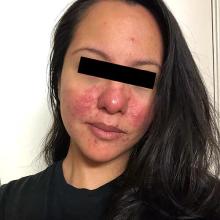
As a first step in a unique undertaking to boost rosacea research results by standardizing its study, a group of investigators including 63 experts from 17 countries as well as 25 rosacea patients have identified eight key aspects of the treatment or exp
Read More
New Study Shows How Skin Care Practices Differ Between Healthy and Rosacea Patients
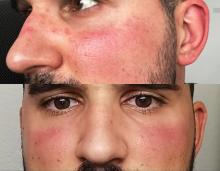
Noting the benefits of both skin care and medical therapy in treating rosacea, a recently published study compared the skin care pra
Read More

